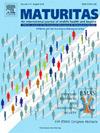Sarcopenia and life-course physical activity in community-dwelling older people
IF 3.6
2区 医学
Q2 GERIATRICS & GERONTOLOGY
引用次数: 0
Abstract
Background
Physical activity is a modifiable factor for sarcopenia. Although several studies have suggested the importance of physical activity in preventing sarcopenia, it is unclear whether different levels of physical activity across different life stages influence sarcopenia. This study examined the association between life-course physical activity and sarcopenia.
Methods
In total, 3846 participants (mean age 76.1 ± 4.6 years, 53.3 % female) from the National Center for Geriatrics and Gerontology-Study of Geriatric Syndromes, a national cohort study conducted in Japan, were included in the analysis. Physical activity status across life stages was categorized as follows: Non-exercisers, n = 2070 (53.8 %); Past exercisers, n = 502 (13.1 %); New exercisers, n = 722 (18.8 %); Maintainers, n = 371 (9.7 %); and Others, n = 181 (4.7 %).
Results
Binary logistic regression analysis showed that Maintainers (odds ratio [OR]: 0.58, 95 % confidence interval [CI]: 0.42–0.80, p = 0.001) had significantly lower odds of sarcopenia in old age than Non-exercisers, even after adjustment for covariates. However, this was not the case for New exercisers (OR: 0.83, 95 % CI: 0.67–1.04, p = 0.099), Past exercisers (OR: 0.87, 95 % CI: 0.67–1.13, p = 0.296); and Others (OR: 0.80; 95 % CI: 0.54–1.21, p = 0.291).
Conclusions
Lifelong exercise habits were associated with lower odds of sarcopenia in older age. In contrast, discontinuation of physical activity in mid-life or late life showed no advantage over lifelong inactivity. However, due to the cross-sectional design of this study, causal relationships cannot be established.
社区居住老年人的肌肉减少症与生命过程中的身体活动
运动是肌肉减少症的一个可改变的因素。虽然有几项研究表明体育活动对预防肌肉减少症的重要性,但尚不清楚不同生命阶段的不同体育活动水平是否会影响肌肉减少症。这项研究调查了生命过程中体力活动与肌肉减少症之间的关系。方法共纳入3846名参与者(平均年龄76.1±4.6岁,53.3%为女性),这些参与者来自日本国家老年病学和老年综合征研究中心,这是一项国家队列研究。整个生命阶段的身体活动状况分类如下:不锻炼,n = 2070 (53.8%);既往运动者,n = 502 (13.1%);新锻炼者,n = 722 (18.8%);维修人员,n = 371 (9.7%);其他,n = 181(4.7%)。结果二元logistic回归分析显示,即使在调整协变量后,维持运动者(优势比[OR]: 0.58, 95%可信区间[CI]: 0.42-0.80, p = 0.001)在老年期发生肌肉减少症的几率显著低于非运动者。然而,新锻炼者(OR: 0.83, 95% CI: 0.67-1.04, p = 0.099)、过去锻炼者(OR: 0.87, 95% CI: 0.67-1.13, p = 0.296);和其他人(OR: 0.80; 95%置信区间:0.54—-1.21,p = 0.291)。结论终身运动习惯与老年肌肉减少症发生率降低相关。相反,在中年或晚年停止体育活动并不比终生不运动有任何优势。然而,由于本研究的横断面设计,无法建立因果关系。
本文章由计算机程序翻译,如有差异,请以英文原文为准。
求助全文
约1分钟内获得全文
求助全文
来源期刊

Maturitas
医学-妇产科学
CiteScore
9.10
自引率
2.00%
发文量
142
审稿时长
40 days
期刊介绍:
Maturitas is an international multidisciplinary peer reviewed scientific journal of midlife health and beyond publishing original research, reviews, consensus statements and guidelines, and mini-reviews. The journal provides a forum for all aspects of postreproductive health in both genders ranging from basic science to health and social care.
Topic areas include:• Aging• Alternative and Complementary medicines• Arthritis and Bone Health• Cancer• Cardiovascular Health• Cognitive and Physical Functioning• Epidemiology, health and social care• Gynecology/ Reproductive Endocrinology• Nutrition/ Obesity Diabetes/ Metabolic Syndrome• Menopause, Ovarian Aging• Mental Health• Pharmacology• Sexuality• Quality of Life
 求助内容:
求助内容: 应助结果提醒方式:
应助结果提醒方式:


